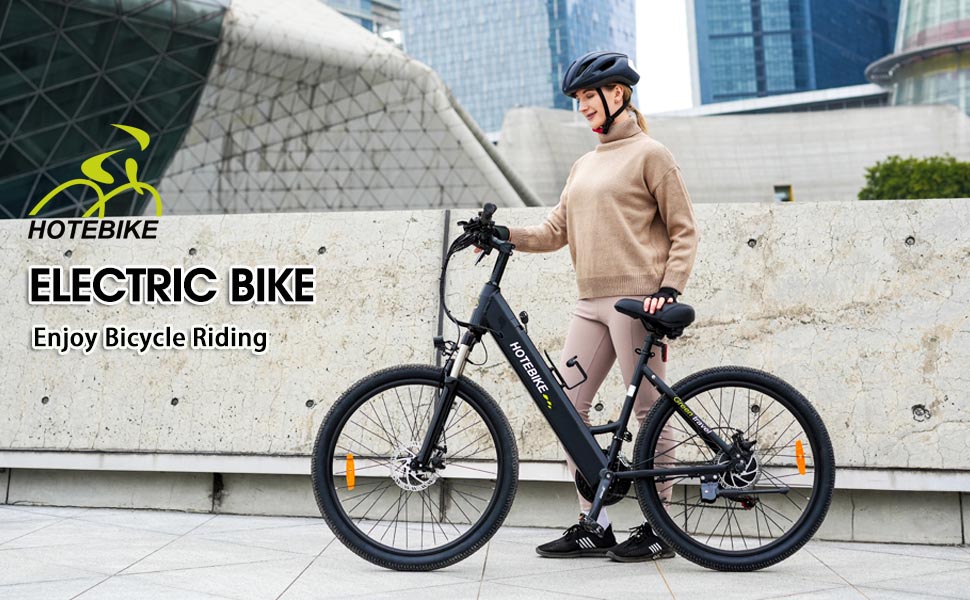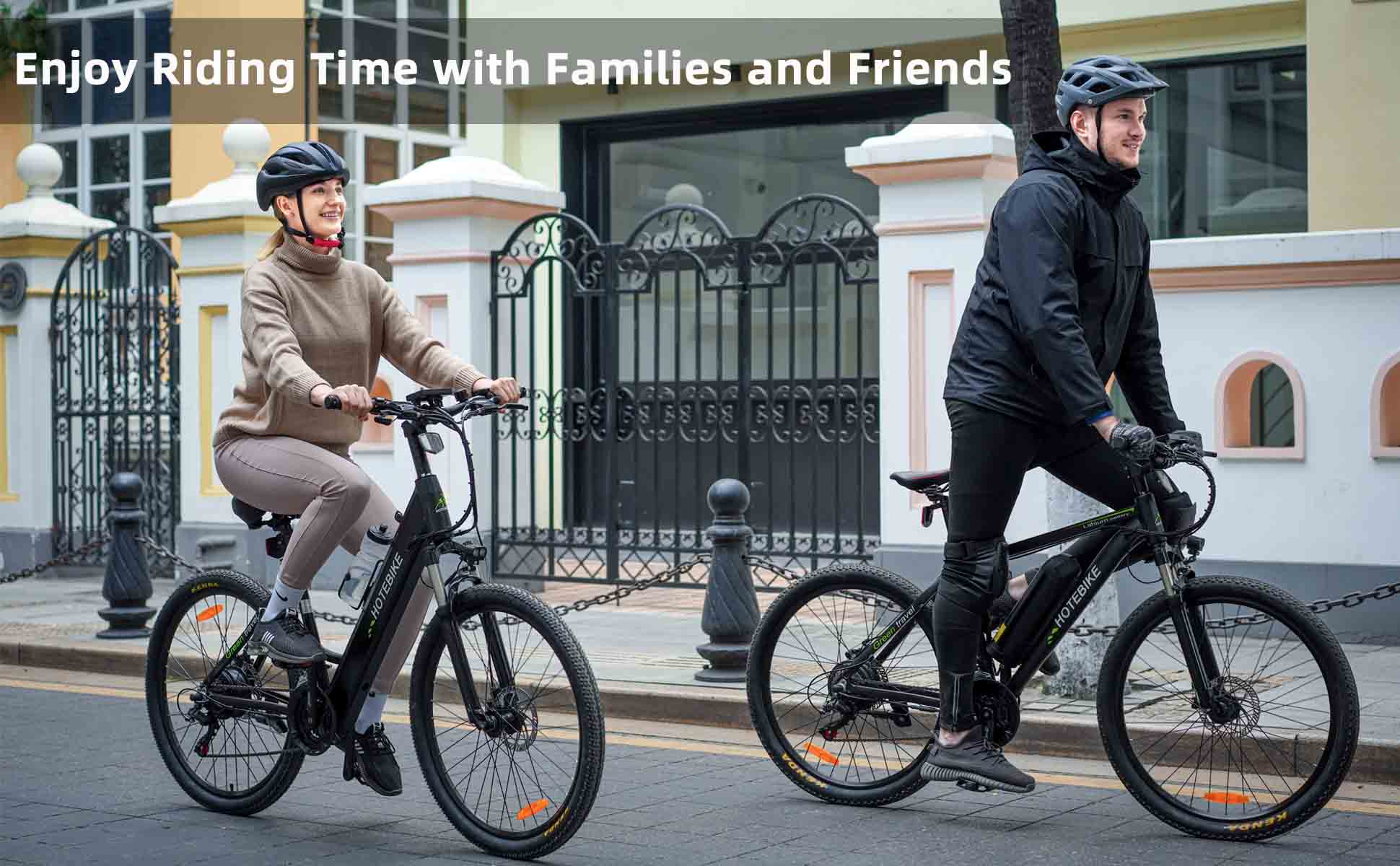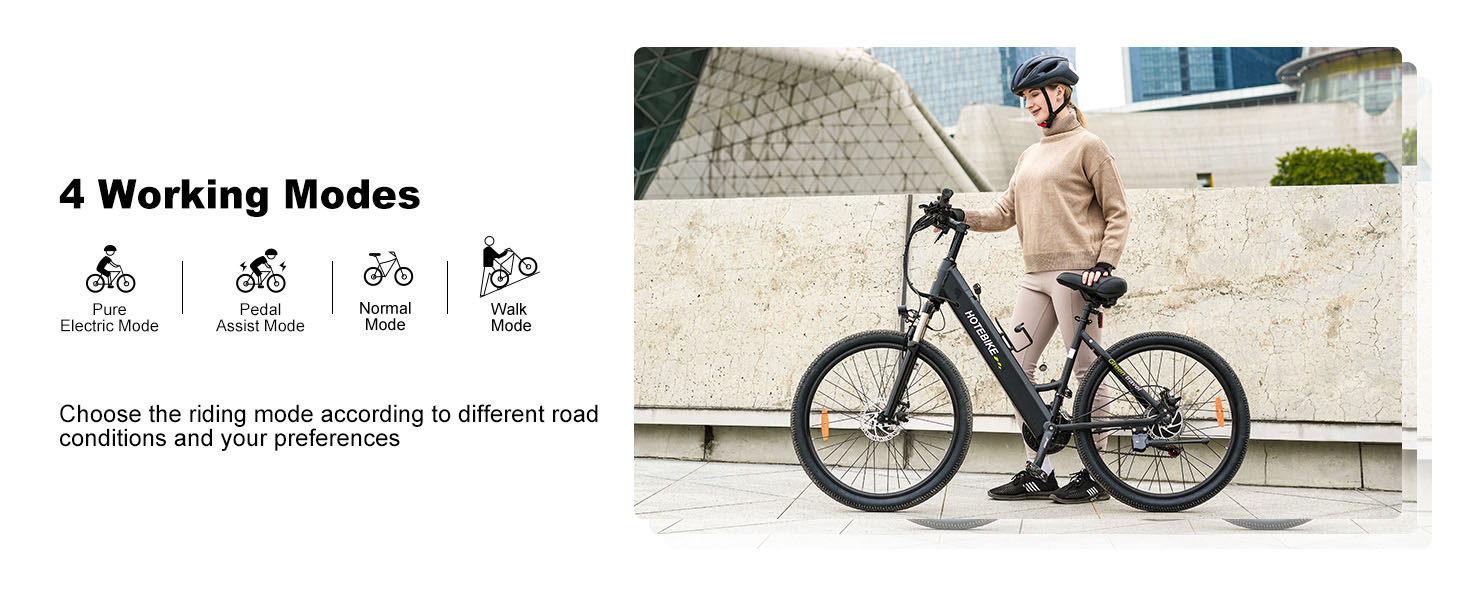Living and commuting in the city can be a hectic experience, especially when it comes to transportation. However, with the rise of electric bikes, navigating urban landscapes has become easier and more sustainable than ever before. Living and riding in the city with an electric bike can be an excellent way to get around quickly, cheaply, and without causing any pollution.In this article, we will explore the benefits of owning an electric bike and provide practical tips on how to live and ride in the city using this eco-friendly mode of transportation.

Owning an e-bike in the city means you don’t have to worry about the heavy burden of car payments, gas or worst of all, parking. Instead, all you need is an electrical outlet, a small storage room and a passion.
Of course, there are some caveats to riding an e-bike in the city. As you ride more and faster, safety becomes more of a concern, and bike theft remains a serious issue.
This guide is designed to ease the fear of riding in the city. Think of it as a mini “e-bike city lifestyle” guide with tips and tricks for being the best city rider you can be.
E-bikes are made for cities.
So it’s time to make the city more suitable for e-bike riders.
The Benefits of Electric Bikes in Urban Environments
- Reducing traffic congestion and carbon emissions
- Cost-saving on transportation expenses
- Health and fitness benefits
- Accessibility and convenience in crowded areas
We’ve repeated the benefits of owning an e-bike over and over again in this blog for what seems like a hundred times, but it bears repeating ……
Riding an e-bike can change your life in many ways.
Especially for those who live or spend a lot of time in the city, owning an e-bike has the most benefits.
First of all, e-bikes make urban transportation easier. They are portable, maneuverable, and the cost of ownership is much lower than some alternatives.
One can completely rely on public transportation such as buses, streetcars, and subways, but then you become a slave to schedules and routes. Today, monthly passes for public transportation are expensive in many cities.
Another option is to own a car, but in cities, cars are often inconvenient and impractical. In addition to the usual costs such as insurance, car owners need to worry about traffic, damage, and most problematic of all, parking. Not every city residence has its own parking lot, and finding a parking space downtown after work can be maddening to say the least. The cost of getting a monthly parking pass in special shared parking lots is also ridiculously high.
Bicycle owners, however, don’t have to worry about these issues. Parking a bike is much easier than parking a car, and you don’t have to worry about bus or subway schedules. With the help of an electric motor, e-bike owners can even travel long distances around the city without breaking a sweat.
It goes without saying that riding an e-bike is also better for the environment!

Choose the right bike
Look for a bike with features that suit your needs – make sure it’s comfortable to ride, lightweight, and has a good range – and buy it from a reputable brand.
Choosing an electric bike for riding in the city shouldn’t be a tough decision – most, if not all, electric bikes will make your life easier.
However, certain e-bikes are better suited to city riders and more useful in certain ways.
For example, having a comfortable e-bike, one that’s sized for your body type, will certainly benefit you, as you’ll likely be riding a lot. Having a properly sized seat or a comfortable saddle cover is also a plus.
Of the different types of electric bikes available, there are many that work well in the city. Electric road bikes, hybrid bikes, cargo bikes, and foldable electric bikes are all good options. If there are no other options, one can even ride around town on an electric mountain bike (eMTB).
Convenience is the most important thing you need when living in the city.
Do you ride the subway often and plan to take your bike with you? Having a bike that is portable and easy to carry around (such as a foldable bike) would be the best option.
Are you a “die-hard” cyclist who likes to ride as fast as you can in a city with lots of traffic? If so, you should purchase an electric road bike.
Maybe you ride your bike not just for work, but for deliveries? Then you definitely need a cargo bike, and a top of the line cargo bike at that.
These are all potential factors to consider when buying an electric bike.
Speed, range and power
Speed may not be a priority when riding an e-bike in the city. For one thing, the speed limit in most cities is about 20-25 mph or 32-40 km/h; most urban e-bike riders reach that speed quickly. For another, the speeds are actually quite dangerous – e-bike riders have an increased chance of being seriously injured, in part by riding too fast.
When choosing an e-bike for the city, you need a bike that is fast enough, not as fast as possible. Most e-bikes offer plenty of power – they’ll get you through the city and over most hills effortlessly.
On the other hand, if you live in a hilly city or need to bike long distances, you may really need an e-bike with a more powerful motor and larger battery capacity.
You should pay attention to range, not speed. Running out of battery power while you’re out and about isn’t the end of the world, but it’s very inconvenient. You also don’t know when the next charge will be (always charging at the office).

Battery capacity and range are more important than speed. Understand how an e-bike works to get the most out of your battery and plan your route when you need a charging station. Try to buy an e-bike with a range of at least 50 miles and perhaps a removable battery. Charging your e-bike is much easier with a removable battery.
What You Need to Know About Urban Cycling
Once you start to really embrace the e-bike life and integrate it into your daily life, everything starts to change (for the better). Parking becomes less of a hassle, bills start to disappear, and traffic becomes observable rather than tolerable.
However, it’s not true that everything will fall into place once you start using an e-bike. (If it did, there’d be a lot more owners for sure!) There are some things you should consciously and actively do, the most important of which are ……
Don’t rely on e-bikes exclusively; use them in conjunction with public transportation. Take public transportation when it’s more convenient (usually long distance) and then take public transportation between stops. This is the best and sometimes fastest way to get around.
Pay attention to the level of pedal assist. It’s easy to keep your bike in high-assist mode, but using a motorless mode will allow you to exercise more often on an e-bike.
Research your route beforehand – whether it’s a commute or a daily errand. Knowing where you’re going will be less stressful and sometimes safer.
Find a charging station beforehand. Batteries are a bike’s Achilles heel. Make sure you know when and where to charge. Consider carrying a second backup battery with you, just in case.
Try to find surface and indoor parking. E-bikes are heavy, don’t underestimate their weight and the fatigue that comes with that weight.
Safety – rules for cycling in the city
The key to using an e-bike in the city and avoiding becoming a roadkill is awareness: awareness of the road, the rules, and most importantly, other drivers.
As mentioned earlier, speed is often fatal. It’s not necessarily that the cyclist is driving too fast and losing control, but that the driver is not expecting them to be traveling at such a high speed. As a result, they make poor judgments about turns, intersections, etc., which can lead to accidents.
To avoid becoming involved in a fatal accident, you must always be alert and do your best to make others aware of your presence. Use hand signals, look at the driver, and communicate to the best of your ability. Doing so will greatly reduce the likelihood of a traffic accident.
Please consider the following points:
Understand the classes of bikes. class 1 and 2 bikes can stay in dedicated bike lanes. class 3 bikes need to be on the road because they are faster. In Europe, class doesn’t matter – all e-bikes have motors limited to 25 kilometers per hour.
Cycling on the sidewalk is usually condemned, if not illegal.
Make sure your lights and reflectors are working properly. Try to maximize visibility when riding.
When riding an e-bike in traffic, stay in the slow lane and follow the traffic rules. Just like when driving: don’t weave in and out of traffic, don’t run red lights, and don’t forget to signal.
Respect other motorists. Biking is cool, but no one likes an arrogant car owner.
Don’t get distracted by cell phones or e-bike screens. There’s enough going on around you.
Finally, always wear a helmet.
Make sure you lock your bike!
Every urbanite has a story like this, or knows someone who does ……
One day they left their bike outside, unlocked. Maybe they were feeling more comfortable than usual, maybe they forgot to lock it. Completely unaware of it, and in total bliss, they just left, only to come back the next day and be surprised. Their bikes had disappeared without a trace.
I hope you enjoyed this post and are ready to hit the road! Seriously, once you’ve mastered this lifestyle, riding an e-bike in the city is an amazing experience. By riding around on an e-bike, you’ll feel more in harmony with the cityscape and more at one with the urban fabric.
The e-bike life isn’t that bad, so get on board now!
 hotebike
hotebike